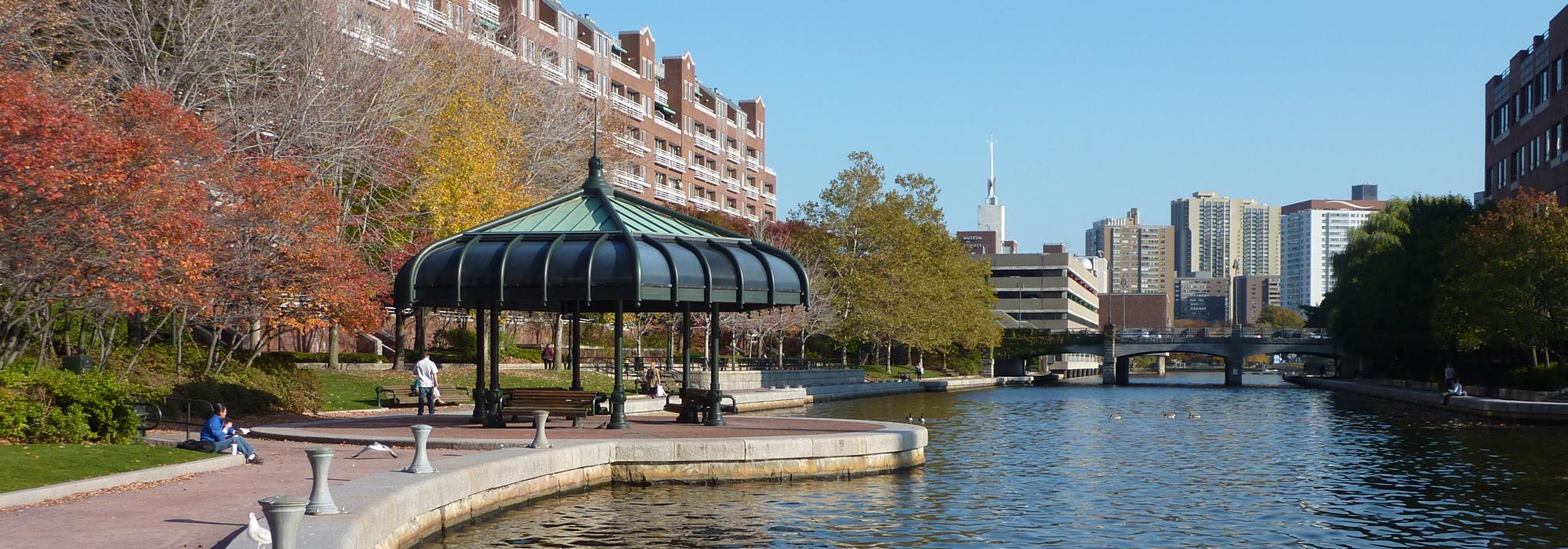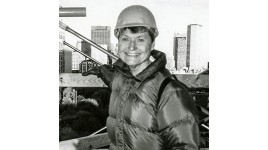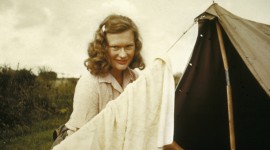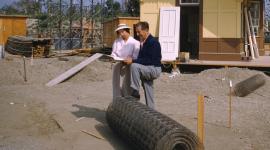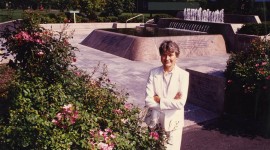Carol R. Johnson Biography
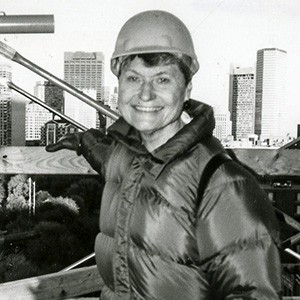
Carol Johnson was born in Elizabeth, New Jersey, on September 6, 1929. She was the second child born to her parents. Her father was a lawyer, and her mother, a school principal. From them she inherited a love of the outdoors.
She was shaped by the landscape experiences of her childhood spent in Killington, and Sherborn Valley, Vermont, as well as on the Gay Head Cliffs on Martha’s Vineyard in Massachusetts.
During this time she climbed trees, hiked and camped out. Her earliest memories of living in a consciously designed landscape were of her time as a student at Wellesley College, and in particular, her introduction to Frederick Law Olmsted’s campus concept of building on the hills and leaving the valley open. She graduated in 1951 with a Bachelor of Arts in English. Following Wellesley, she worked in a commercial nursery in Bedford, Massachusetts. While there, she met John Frey, Pat Manhart, and Eric Desty, students who were studying landscape architecture at Harvard. With their encouragement, she decided to pursue a career in landscape architecture, a field she knew little about.
While at Harvard’s Graduate School of Design, Johnson attributed her personal growth to professors Serge Chermeyoff, Hideo Sasaki*, Norman Newton, and Walt Chambers. Later she would recall that they all gave her their time and attention. From these mentors, she gained confidence, and an understanding of design. In particular, her studies under Sigfried Gideon, the author of Space, Time, and Architecture, would be a great influence on her attitudes toward urban design. Also during this time, Johnson became familiar with collaborative design processes and environmentally sensitive landscape design – two concepts that formed the foundation of her design approach and ethic. She earned her degree from Harvard in 1957.
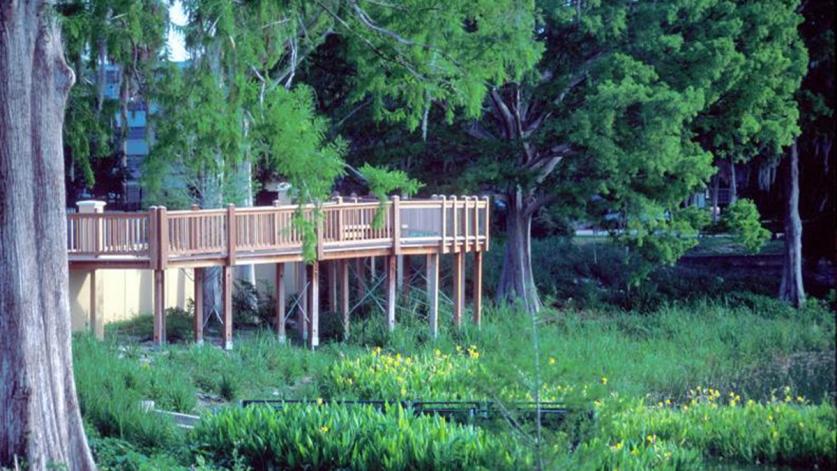
Between 1955 and 1958, Johnson acquired her earliest professional experience, initially with the Bucks County Park Board in Doylestown, Pennsylvania; and subsequently with engineering and planning firms in the greater Boston area. In September 1958, she was one of the first landscape architects to be hired by The Architects Collaborative (TAC), the renowned architectural practice founded by Walter Gropius in Cambridge, Massachusetts. Despite the prestige of her position, and with the encouragement of colleagues, she left TAC after only one year to start her own practice, taking advantage of projects offered to her through her Wellesley and Harvard contacts.
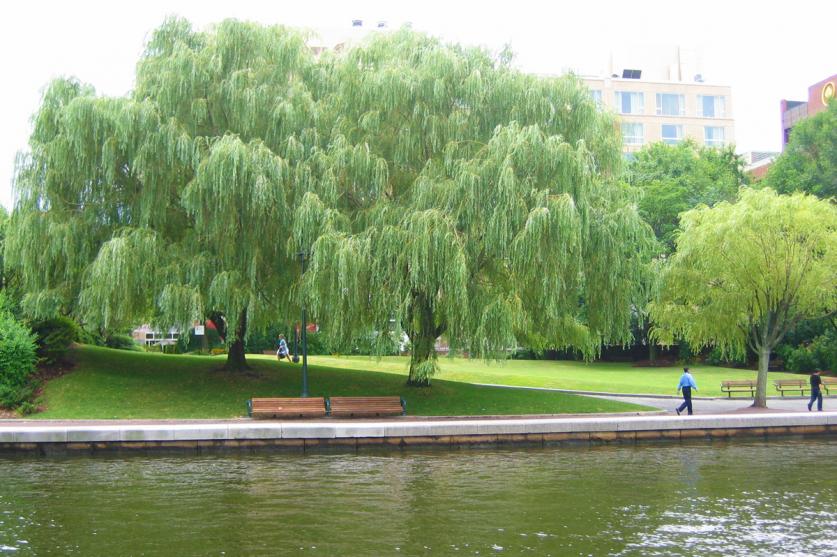
When she founded her firm in 1959, there were few women landscape architects, working on urban design and planning issues.
There were also few male landscape architects who would choose to work for a talented woman landscape architect, when they had opportunities to work for talented men. As a result, her earliest employees included artists and sculptors who, under her tutelage, learned the art and craft of landscape architecture. At first, the project work in the office emphasized suburban private gardens, which allowed Johnson to learn quickly about building landscape details. Very soon, Johnson had opportunities that were unusual for a woman, such as her first foreign project, the landscape associated with the U.S. Pavilion at Montreal’s Expo ’67, where she collaborated with Buckminister Fuller and Cambridge Seven Associates.
Other early Johnson commissions included two pioneering visual impact assessment projects: in 1975, for the Chevron Oil Refinery in Perth Amboy, New Jersey, Johnson collaborated with a team of environmentalists on a phased program of visual improvements, including a new color palette for the refinery; and, in the Finger Lakes region of Upstate New York, in 1981, she directed the site reclamation for the Bell Station on Lake Cayuga. This disturbed area had been abandoned following site preparation for a proposed power plant. Johnson transformed the site into a natural lake-side meadow.
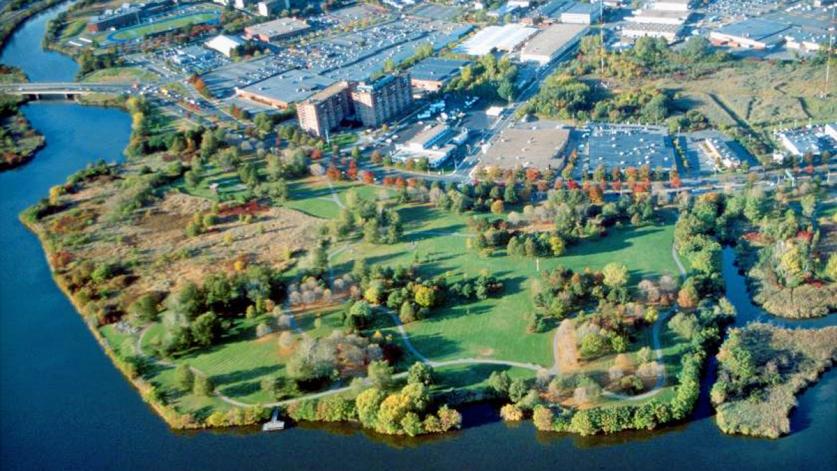
As is evident with these early corporate projects, Johnson based her practice upon the traditional values of dedicated public service, an unrelenting insistence upon quality in design and construction, and educating future practitioners about the social value of good design. Johnson’s first project where she worked closely with an affected community was in 1972 at the North Common in Lowell, Massachusetts, part of Lyndon Johnson’s Model Cities Program. In other community-based planning projects, such as the Mystic River Reservation in Medford and Somerville, MA, Johnson was able to meld her interest in history (in this case Charles Elliot’s approach to scenic and natural resource values) with state-of-the-art environmental sciences. For the once-polluted Mystic Reservation, Johnson worked with consultants who developed new soil mixes and drainage techniques to solve problems posed by toxic soils.
With her reputation established, opportunities for Johnson in the 1970s and 1980s increased. In addition to serving on many planning committees, during President Carter’s administration, she served on the Treasury Department’s Commission on Small Business, and in the 1980s on the Department’s Committee on Development Options. Also during this time she began to travel abroad extensively in Europe, Asia, the Middle East and Africa. While visiting colleagues in Nairobi, she camped out in the desert and visited Kenyan wildlife parks. In Iran, Johnson directed the firm’s first overseas work for the new community, Farahzad. This commission provided her an opportunity to visit the great Persian gardens and civic spaces.
She taught in the Planning Department at Harvard’s Graduate School of Design from 1966 to 1973 and in 1984, Johnson taught and lectured at several architecture schools in Taiwan. This opportunity also provided the impetus for Carol R. Johnson Associates to undertake projects for the first time in the Far East.

Work in the office during the 1980s and 1990s included many of Johnson’s most important built works. Among them are the Old Harbor Park, where she created a waterfront linear park between South Boston and the Kennedy Library in 1990; the John F. Kennedy Memorial Park, which unites the Charles River Reservation with nearby Harvard Square in Cambridge, Massachusetts, completed in 1987; and the Lechmere Canal Park in East Cambridge, the first phase of which was completed in 1983. In addition, her extensive and consulting work on campus landscape master plans and site improvements at colleges and universities from Maine to Florida expanded. In all of these projects, Johnson’s signature design style of establishing harmony with the setting and surrounds; respecting the site’s natural and cultural history; offering respite to users, and providing elements of delight and surprise is present.
Marshall Park in Washington, D.C., completed in 1983. This original conceptual design was integrated into the overall streetscape design for the Avenue itself and the access to the District Court on one side and the Canadian Chancellery on the other. Johnson’s new design provides a stronger memorial to John Marshall, recalling his long tenure in the Supreme Court and its impact on the Federal Government as we know it today.
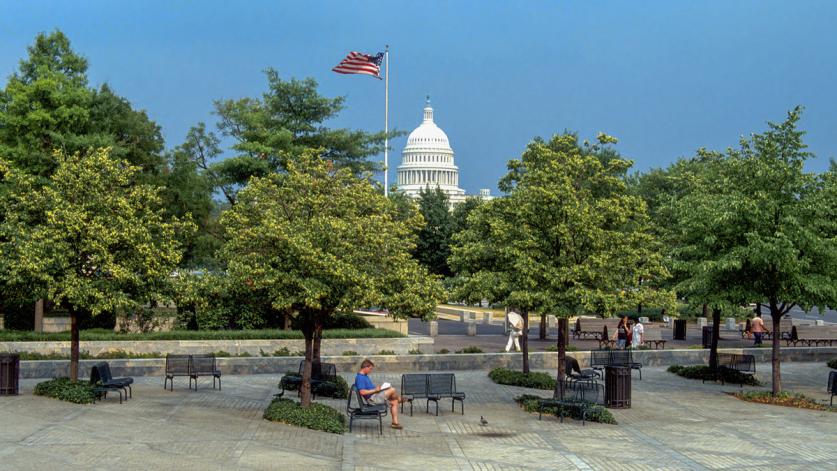
Johnson became a Fellow of the American Society of Landscape Architects in 1982, and in 1998 she was the first American woman to receive the ASLA Medal. She is also a Member of the Boston Society of Landscape Architects, an Honorary Member of the Boston Society of Architects, a Trustee for the Hubbard Educational Trust and Chairman of the Board of Designators for the George B. Henderson Foundation. For ten years, she was a City of Boston Civic Design Commissioner. She holds honorary degrees from Wentworth Institute of Technology and Gettysburg College.
Beyond the positive impact of her work on the public, Johnson’s contribution can be measured by the influence which she has had on new generations of landscape architects. She is recognized as a role model, especially for young women entering a profession. Johnson officially retired in June 2016 and she passed away on December 11, 2020.



